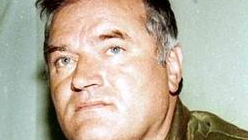16 years after the Srebrenica massacre and 19 years after the siege of Sarejevo, Ratko Mladic has finally been nabbed.
Mladic was the military commander of Bosnian Serb forces. He directed two of the biggest war crimes of the Balkan era: the massacre of 7,000 men and boys at Srebrenica in 1995 and the siege of Sarejevo (which lasted from 1992 to 1996) and claimed 10,000 lives. So, he has the blood of about about 17,000 lives on his hand (not counting any of the other crimes for which he has been charged.)
So what is next for Mladic? I would imagine that by the end of the week, the former General will be sitting in a jail cell in Scheveningen, a neighborhood of the Hague where suspects at the International Criminal Tribunal for the Former Yugoslavia are held during their trial.
I worked at the ICTY several years ago, on the Slobodan Milosevic case. As in any legitimate criminal prosecution, the accused is presumed innocent. To win a conviction against Mladic, prosecutors at the ICTY will need to prove three things:
First, they need to establish what they call a “crime base.” This means demonstrating that, in fact, these alleged massacres occurred as described in the indictment. There is ample evidence from other trials about, say the Srebrenica massacre, that can be submitted to the three panel judge overseeing the case. But this still takes some time.
After having established the facts of the crimes on the ground, prosecutors must demonstrate that Mladic was in charge of his forces at the time these crimes occurred. In war crimes parlance, this means establishing Mladic’s “command authority.” Again, this should not be too difficult–he was, after all, General of the Bosnian Serb army.
Finally — and this is the hard part — prosecutors must demonstrate Mladic was part of what they call a “joint criminal enterprise” with Bosnian Serb political leader Radovan Karadzic the late Slobodan Milosevic, and others to pursue policies that amounted to crimes against humanity and genocide. This is particularly important if the genocide charge is going to stick. Proving “genocide” in a court of law requires proving more than just that Mladic’s forces killed a lot of people. Rather, prosecutors must establish that Mladic was part of a conspiracy with the intention to “destroy in whole, or in part” Bosnian Muslims. This means they must show that Mladic had the intention to commit genocide against Bosnian Muslims.
Proving that intention is difficult, but it is something that prosecutors must do if they are to succeed in winning a genocide conviction.
This is a very long process, to say the least. But if done correctly, it does hold out the prospect of justice for these terrible, terrible crimes.
